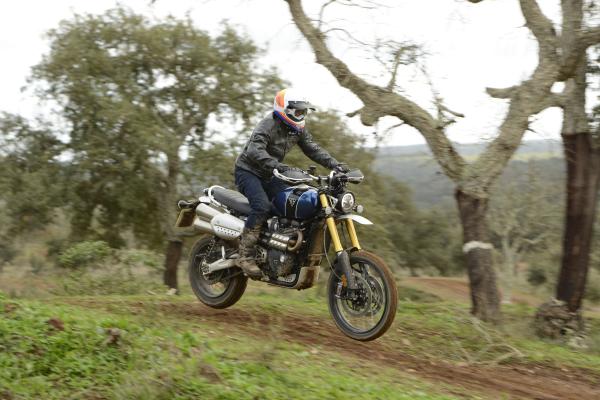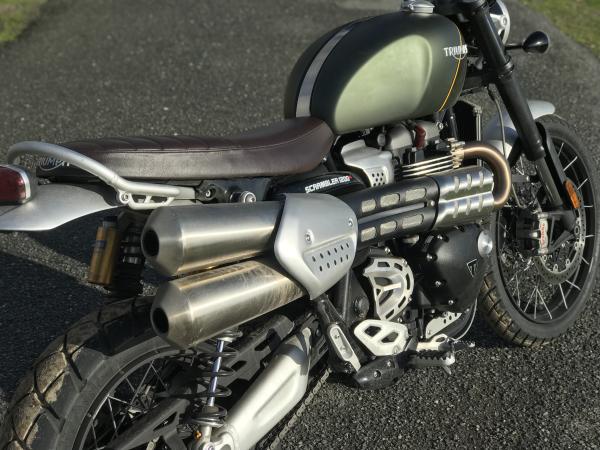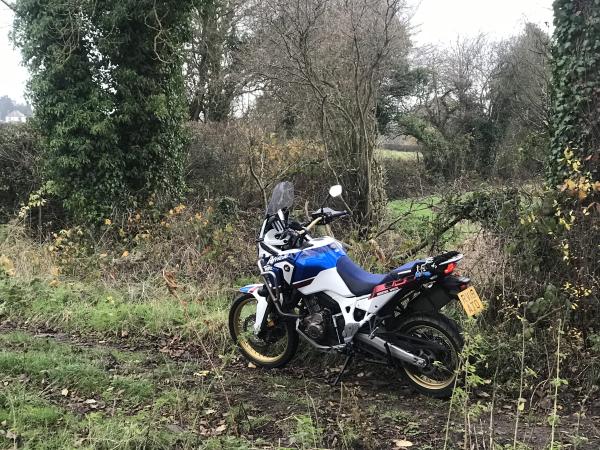Scrambler 1200 XC & XE (2019) Review
Visordown was at the world press launch of Triumph’s new Scrambler 1200, riding both on and off-road, using both variants.

Member for
54 years 8 monthsDetailing
Off-road ability
Small tank
Intrusive ABS on road
OFF-ROAD BIKES are a tricky product for a company to build, in the same way that superbikes are. You have to try and make a bike that’s capable yet accessible, exciting but not scary. To sell the most bikes it has to work for a new rider and a more experienced pilot.
And this is why designing and building the Scrambler must have been a tough ask for the team at Triumph, they have to tick all the boxes I mention above and still fit in with company’s modern classic range. So, the £11,000 question – did the team at Hinckley get it right?
Price
- XC: £11,500 (available end Feb)
- XE: £12,300 (available end Jan)
The 1200 XC is the bike with the black forks and is available in two twin colour schemes: Khaki Green and Brooklands Green or Jet Black and Matt Black. The 1200 XE, gold forks, is available in: Cobalt Blue and Jet Black or Fusion White and Brooklands Green. Both the XE and XC come with a 24-month unlimited warranty and first major service interval of 10,000 miles.
Engine, power and torque
Powering the Scrambler is a revised version of the 1200cc, parallel twin cylinder engine we’ve seen in the Bobber, Bobber Black and Thruxton models for a few years now. The engine's internals have been reworked with a lightened crank and balance shafts, meaning the engine does spin up quicker than the slightly lazy feeling motor of the Bobbers.
The engine produces 90PS (88bhp) @ 7,400 rpm, with peak torque of 110Nm (81ftlb) at 3,950 rpm. The 270° firing order of the engine mimics the sound and response of a v-twin and means the torque delivery of the engine is smooth and linear, great for riding off-road, with enough shove to get the back end sliding about on command. On the road, the engine pulls really nicely from very low down the rev range and allows you to lift the front wheel in second gear with ease and only seems to be running out of puff at above motorway speeds.
Around some of the smaller towns and villages, I found the engine and throttle response (fly-by-wire) to be extremely tractable, although there is a slight fluffiness in the first couple of degrees of opening the twistgrip.
Frame, suspension and brakes
Thinking that the Scrambler is just a jacked-up Triumph Bonneville on knobblies is doing the machine a massive disservice. The frame is a completely new item not just for the Scrambler but for each variant, both the XC and XE variants have slightly different set-ups including different swingarms. It’s a completely new design of swingarm and is 547mm long on the XC and 579mm on the XE.
The main frame of both bikes is tubular steel with aluminium cradles, with the XC having an 840mm seat and the more extreme, off-road focussed XE sitting at 870mm.
The extra leg-room of the XE is thanks to its longer suspension that gives 250mm of travel front and rear, as opposed to the 200mm of travel the XC has. The front forks are Showa Adjustable units and tretro-looking twin shocks are thanks to a link up with suspension maker to the stars, Ohlins.
Both the front and rear units work extremely well, feeling plush on and off-road although the longer travel of the XE did make the bike feel like a more advanced machine, better suited to a those with a higher level of dirt riding ability.
Braking is provided by Brembo with top-spec, M50 monobloc calipers at the front biting down onto 320mm discs and a two-piston Brembo caliper and 255mm disc at the rear. The M50s are more than up to the task of hauling up this 200kg bike, we’ve seen them for some time on top-flight nakeds like the Street Triple RS, and for a time I thought the pricey calipers were overkill but they aren’t. A 21-inch front wheel on a bike of this size, that’s capable of over 110mph needs supersized stoppers and that’s what the Brembos provide. They have loads of feel at the lever and bags of power on and off-road. The XE also gets a high-spec Brembo MCS master cylinder which if I’m honest I didn’t really feel the benefit of, although a more experienced off-road rider might.
Both bikes feature ABS and Traction Control with the XE also getting an IMU (Inertial Measurement Unit) that was co-developed with Continental. I found the system allowed me to trail brake into the corners, even when the surface was muddy and rutted, in a way I haven’t before on any motorcycle. When riding off-road I normally go for a conservative braking style, getting most of it done in a straight line and then if needed use the back brake only while still carrying some lean. With the IMU working away beneath me and the fantastic feeling I had at the lever of the XE, I was braking much later and harder, while still carrying some lean angle. When riding on the road I found that the ABS would cut in a tad too early, especially in the ‘Road’ riding mode although with more time you could dial this out by using either one of the off-road modes or even by configuring the ‘User’ mode to your liking.












